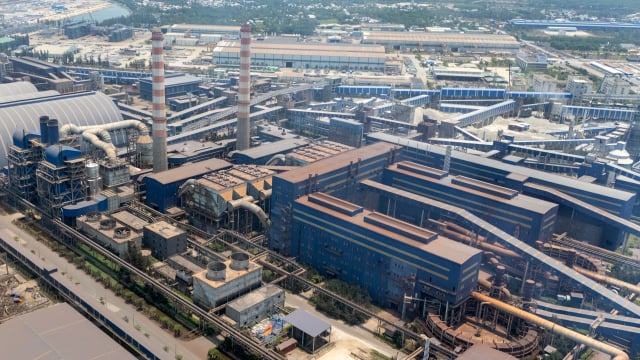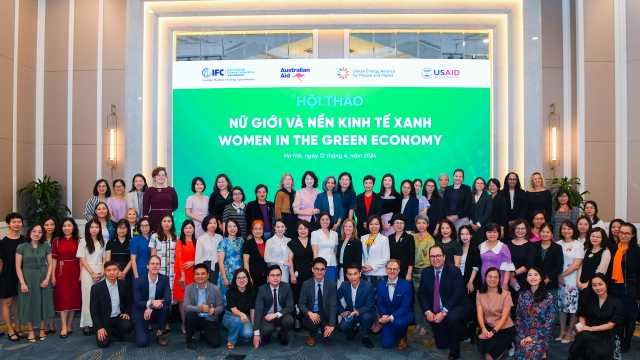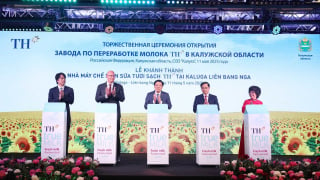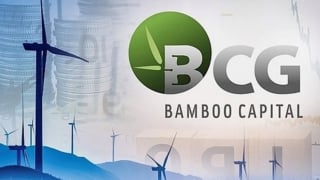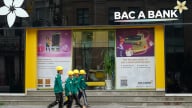National Focus
Digitalization is key for circular economy
Most circular economy initiatives are individual projects focused on physical materials and resources.
The circular economy concept now is increasingly seen as a way forward to resource-efficient economy, in which GDP growth is achieved without excessive consumption of resources and limiting negative impacts on the environment.
Henrik Hvid Jensen, CTO of Circular Economy Internet Society, added that the new concept is the only way to achieve climate neutrality by 2050.
The European Commission estimates that applying circular economy principles across the EU economy has the potential to increase its GDP by an additional 0.5 per cent by 2030, creating approximately 700,000 new jobs.
There is a clear business case for individual companies too. Since manufacturing firms in the EU spend on average approximately 40 per cent of the total cost of goods on materials, closed-loop circular models can increase profitability and protect against price fluctuations.
The mentioned potentials are the driving force for governments, businesses and international organizations to promote the application of the circular economy model through creating lots of initiatives as World Economic Forum's Scale360° Circular Innovation Playbook or EU's Rethinking Plastics project.
In Vietnam, the circular economy is also a strategy followed by lots of businesses to demonstrate their social and environmental responsibilities, leading to the development of initiatives like Circular Economy Network or Packaging Recycling Organization Vietnam (PRO Vietnam).
However, despite great efforts, the economy is still mostly linear, with only 12 per cent of secondary materials and resources being brought back into the EU’s economy. In the developing countries like Vietnam, the number is much lower.
Henrik explained that currently, most circular economy initiatives are individual projects focused on physical materials and resources.
However, to scale these solutions globally and across industries, there is a need to build coherent digital foundations – taken together, a digital backbone – to support attractive global circularity business models and accelerate the journey towards circularity.
Without a digital foundation, a circular economy will happen more slowly, with fewer attractive circular business models and less impact on global climate goals, economic growth, and poverty reduction.
There are five characteristics of a digital backbone for circular economy, including many-to-many interoperability, shared circular economy digital toolbox, data owner controls or sharing of data, open software platform and a global public good.
In details, for example, the interoperability means enterprises can immediately have a trustworthy exchange of information and do transactions with up- and down-stream partners anywhere in the business ecosystem.
Nguyen Hoang Phuong, a policy and legal consultant, said that providing sufficient relevant information is one of the mandatory responsibilities for businesses when taking Extended Producer Responsibility (EPR).
Not only supporting businesses, but the digital platform can also effectively support the collection and classification of waste from the consumer, through lots applications connecting suppliers or demanders as mGreen, Gogreen or Ralava.
The activities then will help raise consumers' awareness and change their behaviour which is said to be the key for circular economy model, according to PRO Vietnam.
Bringing circular economy knowledge into education
Resolution 68: A turning point in Vietnam's private sector policy
As Vietnam sets its sights on becoming a high-income country by 2045, Resolution 68 lays a crucial foundation. But turning vision into reality requires not only good policy - but also unwavering execution, mutual trust and national unity.
Vietnam plans upgrade of Gia Binh airport to dual-use international hub
Vietnam plans to upgrade Gia Binh Airport in Bac Ninh province into a dual-use international airport to support both military and civilian operations, the government said on Friday.
Lives under the scorching sun: Outdoor workers racing against climate change
Under unforgiving conditions, the outdoor workers - the backbone of urban economies - endure the harshest impacts of climate change while remaining overlooked by social safety nets. Their resilience and struggles highlight the urgent need for better protection in the face of rising temperatures and precarious livelihoods.
CEO Group chairman unveils guide to Vietnam real estate for foreigners
Doan Van Binh, Chairman of CEO Group and Vice President of the Vietnam National Real Estate Association, introduced his latest book, “Vietnam Real Estate for Foreigners,” at a launch event in Hanoi on Friday.
Women leading the charge in Vietnam's green transition
Acting for increased women’s participation and leadership in climate action, Vietnam can accelerate a transition that is more inclusive, just, and impactful.
Steam for girls: A journey of passionate and creative girls
The "Steam for girls 2024" competition provides a creative platform for Steam and an opportunity for students to connect with peers from various regions within Vietnam and internationally.


















